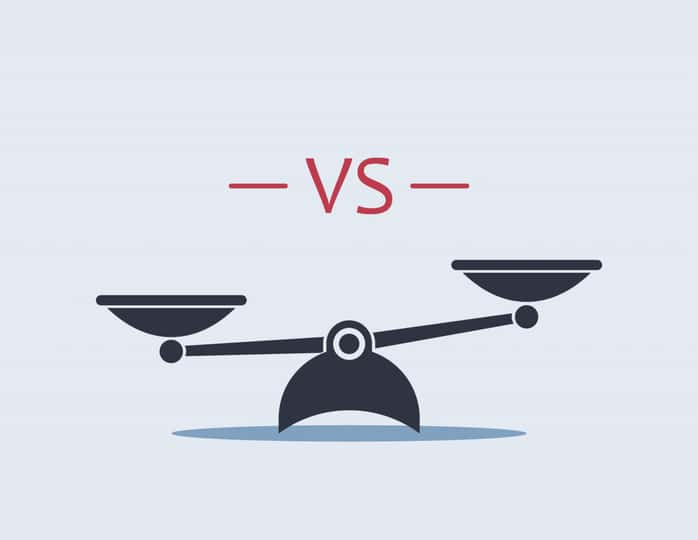BJ’s Wholesale Club Holdings, Inc. (BJ - Get Rating) and Big Lots, Inc. (BIG - Get Rating) are two popular retail and warehouse companies that operate in the U.S. BJ sells groceries, general merchandise, and non-edible grocery products, as well as gasoline and other ancillary services through its website and mobile app. BIG offers products under consumables, merchandising, seasonal, and other categories.
BJ and BIG have been thriving given the structural shift in consumer behavior and strong demand for digital services driven by the COVID-19 pandemic. Their market-share gains and strategic investments in digital capabilities, membership, marketing and geographic expansion should lead to a rise in profits and improved cash flow in the near term.
But, while BJ has returned 101.5% over the past year, BIG has gained 111.1%. In terms of their past nine-months’ performance, BIG is the clear winner with a gain of 136.9%versus BJ’s 61.7% returns. So, which of these stocks is a better pick now? Let’s find out.
Latest Movements
Last month BJ opened its newest club in Long Island City, N.Y., to help members save time and money in a convenient one-stop shop. The expansion should help the company offer better value to its customers by providing a more convenient shopping experience.
Also last month, the company signed a three-year, exclusive agreement with CommerceHub, a leading ecommerce enablement platform, to help accelerate BJ’s digital model to further extend its drop-ship network and grow online business. The move should help BJ make significant progress in expanding its omnichannel offerings and rolling out new digital services.
In January, BIG provided a business update on its results for its fiscal fourth quarter, 2020. The company’s quarter-to-date comparable sales increase of approximately 7.5%, reflected double-digit growth in all merchandise categories. Also, its e-commerce demand quarter-to-date is up approximately 135%.
Recent Financial Results
In the fiscal third quarter ended October 31, 2020 BJ’s total revenue increased 15.6% year-over-year to $3.73 billion. The company’s operating income grew 88.6% from the year-ago value to $190.36 million, while its adjusted EBITDA increased 57.1% from the prior-year quarter to $242.21 million. BJ’s EPS increased 120% year-over-year to $0.88 over this period.
BIG’s net sales have increased 18% year-over-year to $1.38 billion in the third quarter ended October 31, 2020, attributable to a 17.8% increase in comparable sales along with sales growth from new and relocated non-comp stores. The company reported a cash and cash equivalent of $547.83 million over this period.
Expected Financial Performance
Analysts expect BJ’s revenue to increase 13.5% in the current quarter, and 16.8% in the current year. BJ’s EPS is expected to grow 67.5% in the current quarter, and 108.2% in the current year. Also , its EPS is expected to grow at a rate of 21.8% per annum over the next five years.
In comparison, , analysts expect BIG’s revenue to increase 8.1% in the current quarter, and 16.5% in the current year. The company’s EPS is expected to grow 4.6% in the current quarter, and 100.3% in the current year. BIG’s EPS is expected to grow at a rate of 15.8% per annum over the next five years.
BJ has an edge over BIG here.
Profitability
BJ’s trailing-12-month revenue is more than two times BIG’s. But BIG is more profitable, with a gross profit margin of 40.2% versus BJ’s 19.1%.
However, BJ’s ROE and ROA of 651% and 6.8%, respectively, compare favorably with BIG’s 61.9% and 5.7%, respectively.
Valuation
In terms of trailing-12-month p/e, BJ is currently trading at 15.87x, which is much more expensive than BIG, which is currently trading at 3.76x. Also, its forward PEG of 0.82x is 60.8% higher than BIG’s 0.51x.
Though BJ looks expensive compared to BIG, it is worth paying this premium considering BJ’s significantly higher earnings growth potential.
POWR Ratings
Both BJ and BIG have an overall rating of B, which equates to Buy in our proprietary POWR Ratings system.
BJ has a Growth Grade of A, which is consistent with the expected growth in earnings and revenues. In comparison, BIG has a Growth Grade of C.
In terms of Momentum Grade, both BJ and BIG have a B rating, which is consistent with their price returns over the past year.
Both BJ and BIG have a grade of A for Value, as both are trading below the industry average in terms of P/E and PEG.
Of 41 stocks in the A rated Grocery/Big Box Retailers industry, BJ is ranked #20 and BIG is ranked #27.
Beyond what I stated above, our POWR Ratings system also rates both BJ and BIG for Quality, Stability, and Sentiment. Get all of BJ’s ratings here. Also, click here to see the additional POWR Ratings for BIG.
The Winner
Both BJ and BIG can be considered good investments based on the factors discussed here. However, despite trading at a relatively higher valuation, BJ is the better buy based on superior financials.
Click here to learn about the other top-rated stocks in the Grocery/Big Box Retailers industry.
Want More Great Investing Ideas?
9 “MUST OWN” Growth Stocks for 2021
#1 Ingredient for Picking Winning Stocks
7 Best ETFs for the NEXT Bull Market
5 WINNING Stocks Chart Patterns
BJ shares were trading at $42.51 per share on Tuesday morning, up $0.03 (+0.07%). Year-to-date, BJ has gained 14.03%, versus a 2.31% rise in the benchmark S&P 500 index during the same period.
About the Author: Imon Ghosh

Imon is an investment analyst and journalist with an enthusiasm for financial research and writing. She began her career at Kantar IMRB, a leading market research and consumer consulting organization. More...
More Resources for the Stocks in this Article
| Ticker | POWR Rating | Industry Rank | Rank in Industry |
| BJ | Get Rating | Get Rating | Get Rating |
| BIG | Get Rating | Get Rating | Get Rating |






